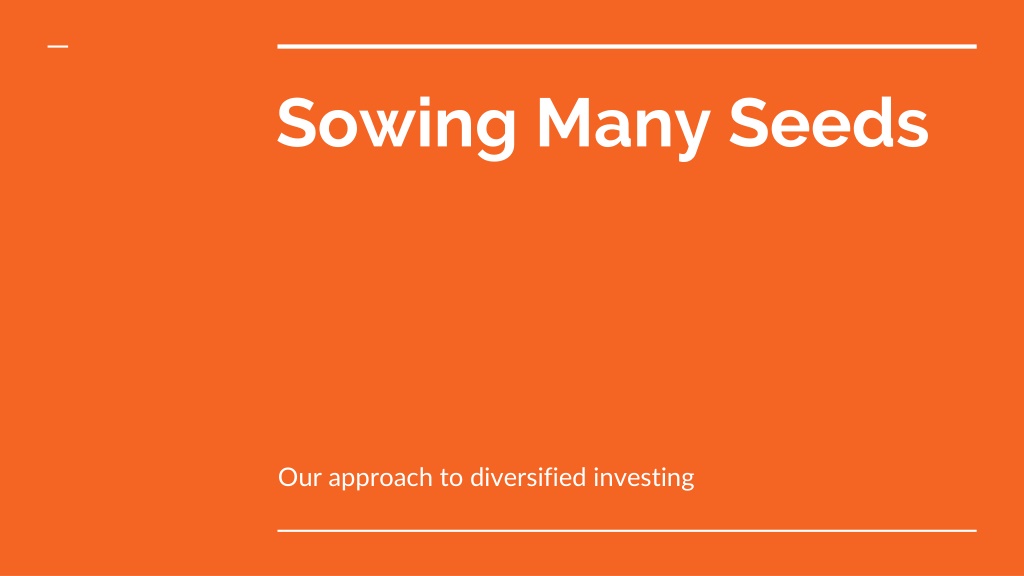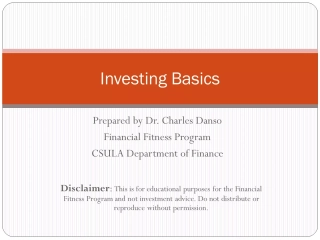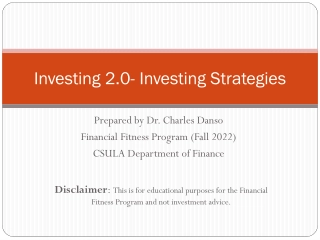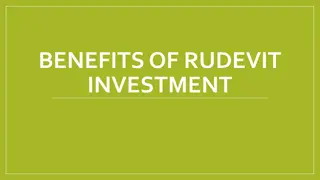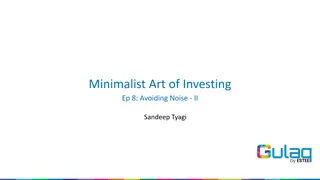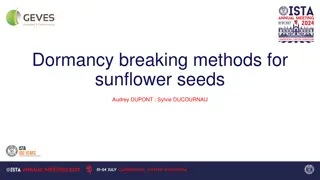Diversified Investing Approach: Sowing Many Seeds
Exploring a diversified investing approach where flexibility, freedom, and a wide range of stock ideas are emphasized. The portfolio consists of 10-15 main stocks along with a long tail of additional ideas. The rationale behind diversification is rooted in limited knowledge, loss aversion, and the belief that having multiple winners is preferable to concentrating on one. Embracing a learning mindset, the investors aim to continuously expand their industry and company knowledge.
Download Presentation

Please find below an Image/Link to download the presentation.
The content on the website is provided AS IS for your information and personal use only. It may not be sold, licensed, or shared on other websites without obtaining consent from the author. Download presentation by click this link. If you encounter any issues during the download, it is possible that the publisher has removed the file from their server.
E N D
Presentation Transcript
Sowing Many Seeds Our approach to diversified investing
How does our portfolio look like? - No formal procedure or rule - Lot of flexibility. Everyone free to do what they want. 10-15 Stocks are 70-75% of the portfolio. Then there is long tail of 20-30-50 ideas. - It is a sowing ground where more the merrier.
We have very limited knowledge Many often the stocks where we worked very hard, where we thought we knew enough, gave the worst returns. We are very number driven. We don t know much about various industries, future and qualitative aspects. While many others - not our favorites - gave extra-ordinary returns.
We are loss averse We have seen some super smart people quit markets. Negative black swans can wipe one's capital. Sar salamat, toh pagdi hazaar
5 big winners is better than 1 big winner If you re looking for a gold needle in a haystack of gold, it s not better to find the gold needle. - Warren Buffett Astral vs Mayur Why not both?
So I think it was just looking at different companies and I always thought if you looked at ten companies, you d find one that s interesting, if you d look at 20, you d find two, or if you look at hundred you ll find ten. The person that turns over the most rocks wins the game. - Peter Lynch Markets are an ocean We feel that Indian markets are full of opportunities. It is an error to be limited / exposed to very few stories especially in early part of career.
But consciously, we are learning about lots of industries and companies. We have too much idle time We never knew about what shrimp is, what USFDA is or what DI pipe is. We are 3 people. We need to do something to fill the time. We want to read everything!
Why we have a long investments tail?
Darwin believed that we would quickly find reasons to reject a new idea until we consciously work on it and participate. Darwin s Theory That it is difficult to accept new ideas.
You know a girl only after you marry her
By buying, we put our foot in the door If there is a sudden change, we start wondering about what could have been the cause. Sometimes we invest in a new company only based on last quarter results - giving it less than an hour of study.
Think of it like an R&D cost to a pharma company
Limited Downside In most cases, the company is too small, with insufficient information and a 30 page annual report. This very uncertainty makes them cheap and extraordinarily rewarding. If the story doesn t work as expected (which happens often), we can sell out at a little loss.
Strategies and examples?
But same pattern hasnt worked out for Suzlon, Hind Zinc, IMFA!
Past will be poor - focus on few small things which may be changing. Thoughts on catching a business in transition Be aware of the negatives in a company. See if the same is changing. The negatives might not be a deal-breaker. Concept of dis-conforming evidence eg. Ajanta, Chamanlal, Premco.
Embrace Failures If you are not failing then you re not learning - Munger Make and break things like an artist.
